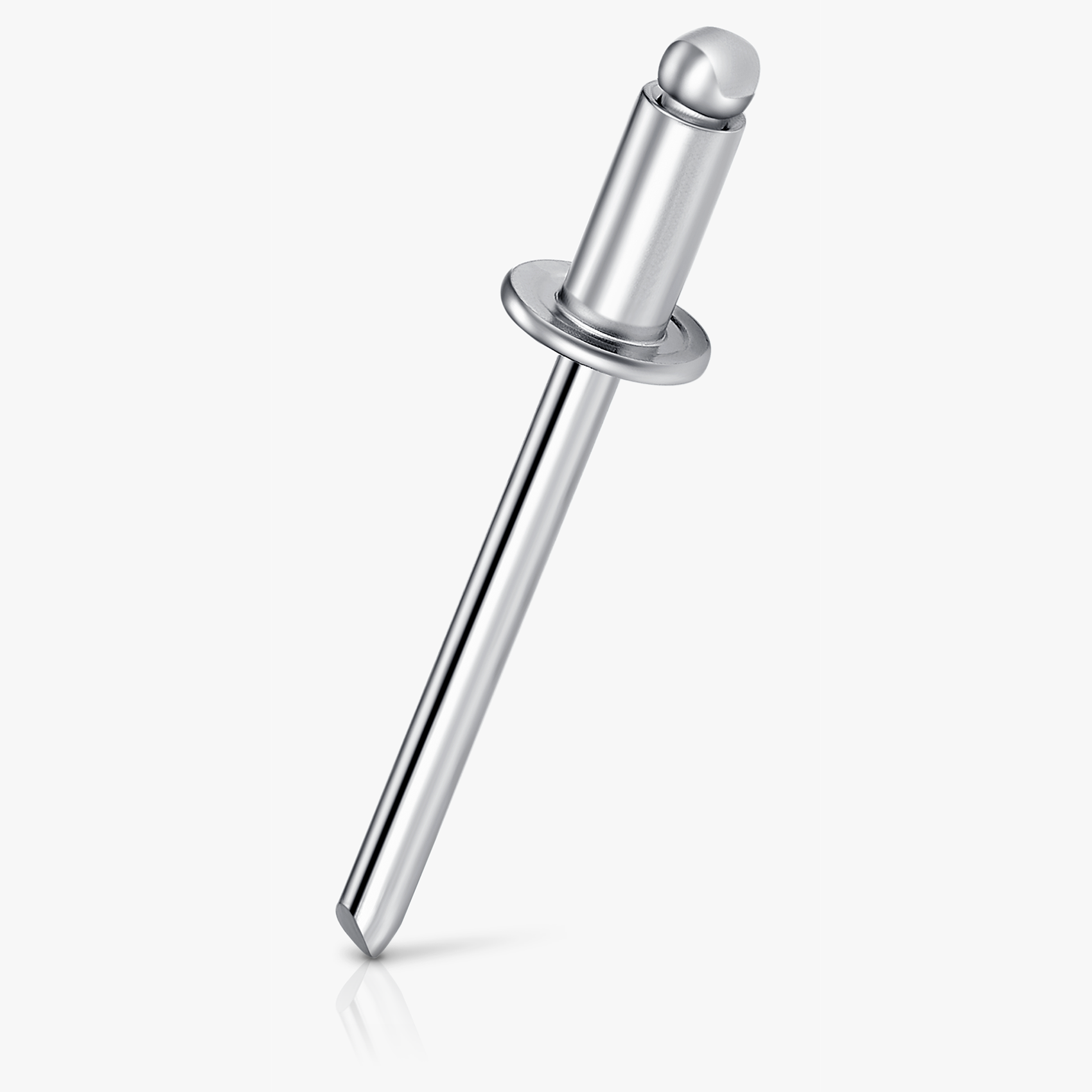SS/MS Open End Blind Rivets, also known as stainless steel/mild steel open end blind rivets, are commonly used fasteners in various industries due to their versatility and ease of installation. Here are the key details about these rivets:
Material:
- Stainless Steel (SS): Offers excellent corrosion resistance, making it suitable for applications where exposure to moisture or corrosive environments is a concern. Stainless steel rivets are often used in outdoor or marine applications.
- Mild Steel (MS): Provides strength and durability at a lower cost compared to stainless steel. Mild steel rivets are commonly used in indoor applications or where corrosion resistance is not a primary concern.
Design:
- Open End: These rivets have an open end, allowing for easy insertion of the mandrel (the pin-like component used during installation).
- Blind: Blind rivets are installed from only one side of the workpiece, making them ideal for applications where access to the opposite side is limited or impossible.
Head Types:
- Countersunk: The head of the rivet sits flush with the surface of the workpiece when installed, providing a smooth and finished appearance.
- Dome: The head of the rivet protrudes slightly above the surface of the workpiece when installed, offering a more rounded appearance.
Sizes:
- Available in various diameters and lengths to accommodate different applications and thicknesses of materials.
- Common diameters include 3/32", 1/8", 5/32", and 3/16".
Installation:
- Requires a rivet gun or riveter tool for installation.
- During installation, the mandrel is pulled through the rivet body, causing the body to expand and form a secure joint, even if only accessible from one side.
Applications:
- Used in automotive, aerospace, construction, electronics, and other industries for joining materials such as metal, plastic, and composites.
- Common applications include attaching metal sheets, panels, and components, as well as for structural purposes.
Advantages:
- Quick and easy to install, requiring minimal skill or specialized tools.
- Provide a strong, vibration-resistant joint.
- Can be used with a wide range of materials and thicknesses.
- Ideal for applications where welding or other forms of fastening are impractical.
Limitations:
- May not provide as high a strength as certain other fastening methods like welding in certain applications.
- Requires access to only one side of the workpiece for installation, which may not be suitable for all applications.
- Depending on the material and environmental conditions, corrosion resistance may be a concern with mild steel rivets.
